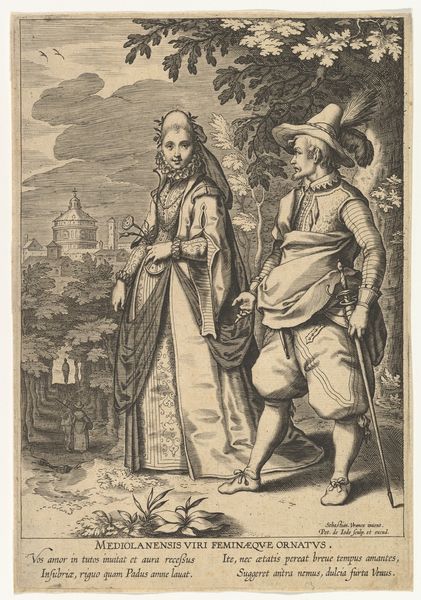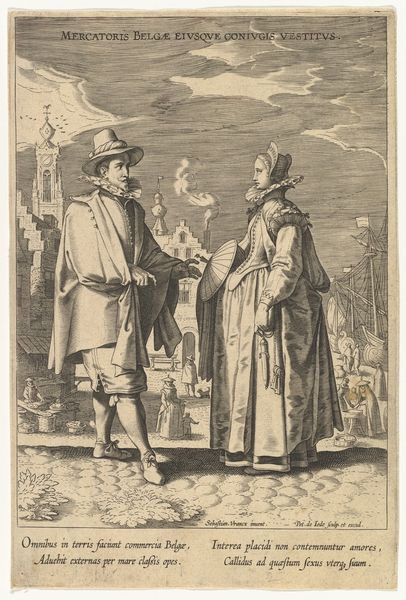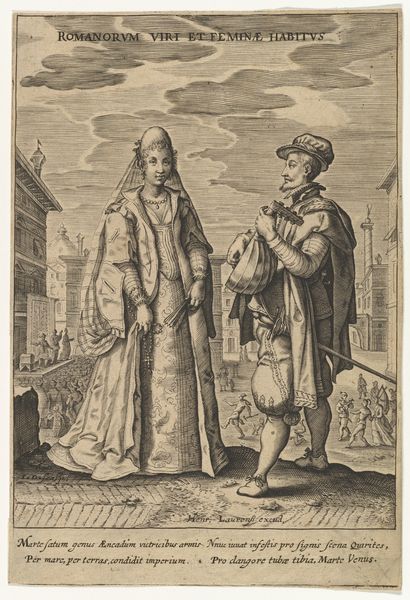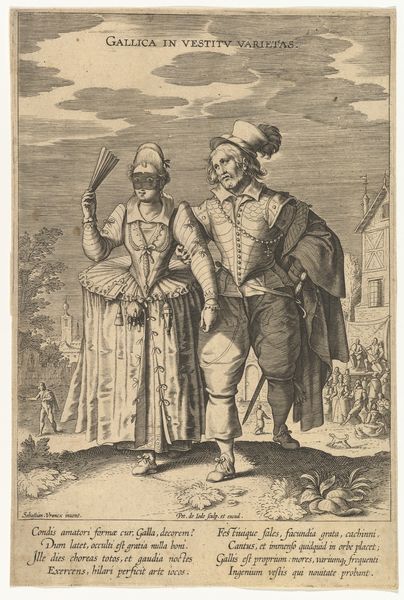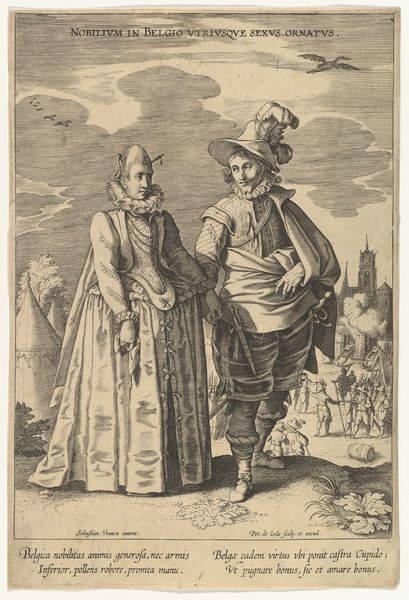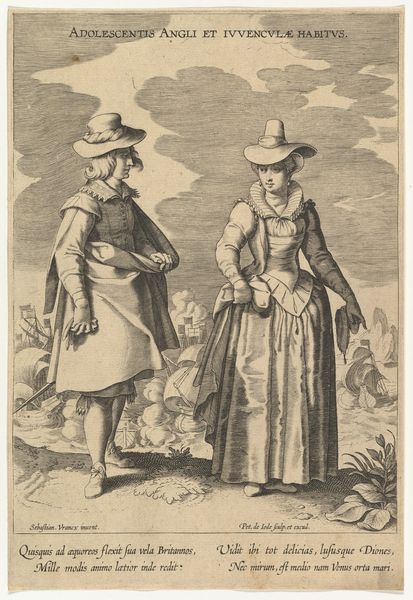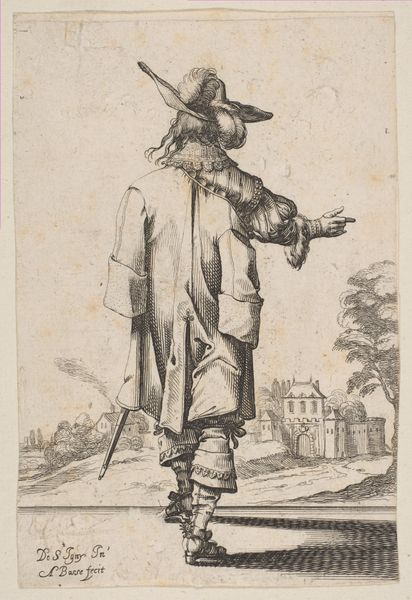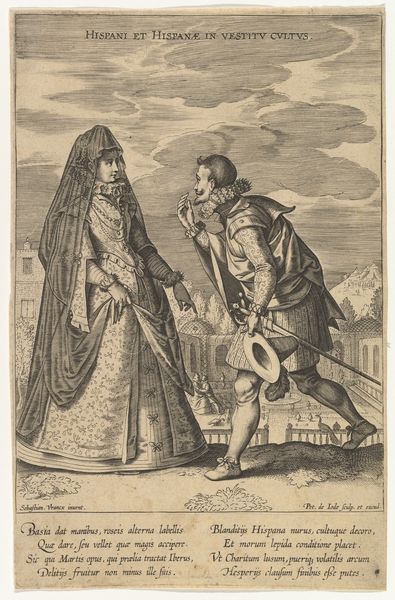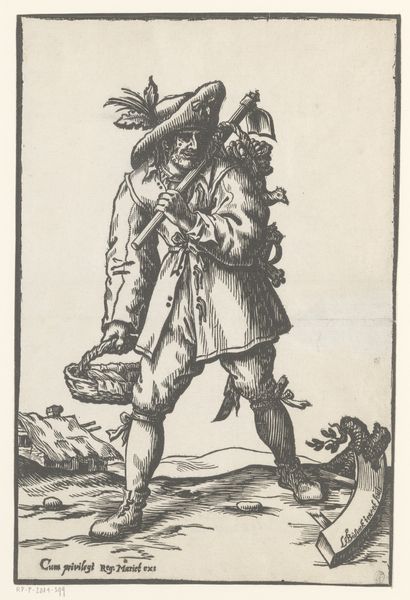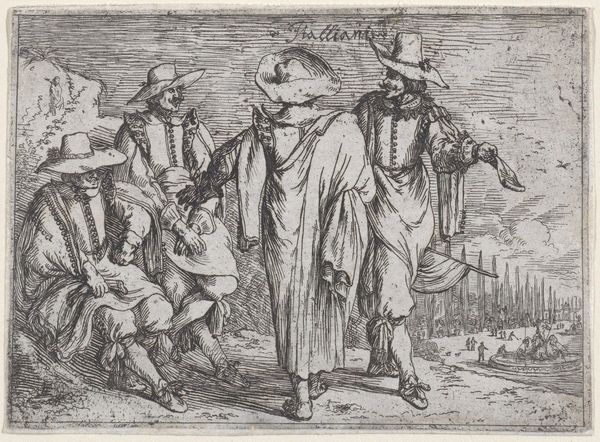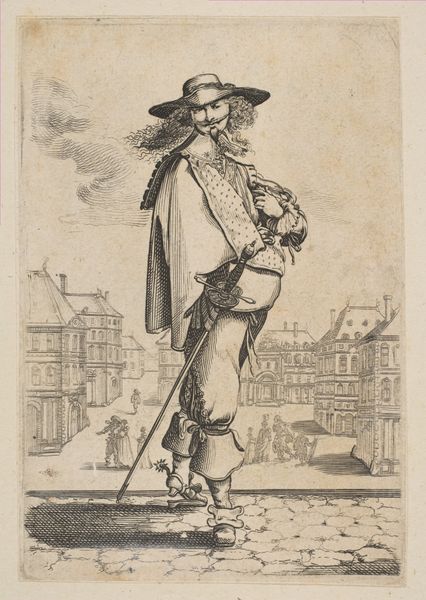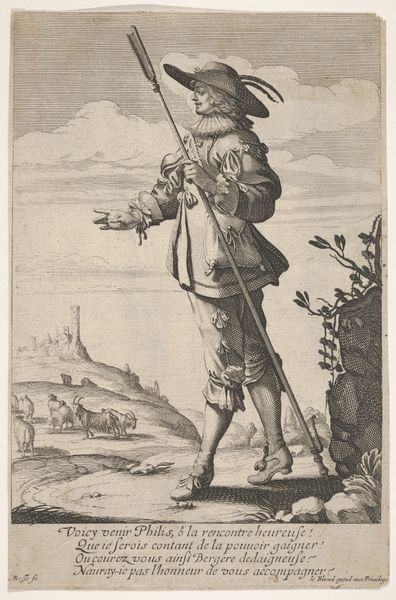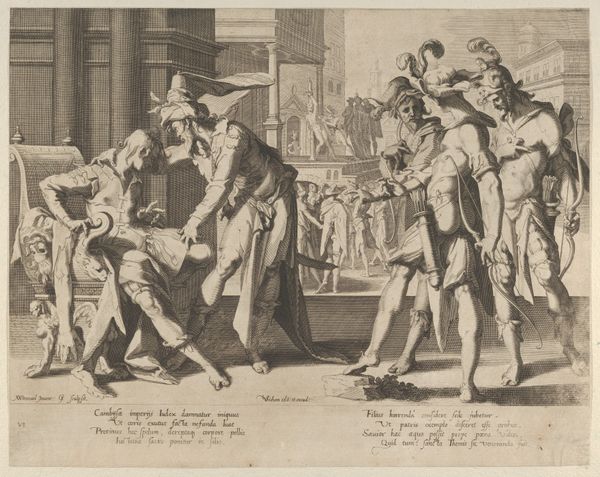
Viri et Mulieris apud Florentinos Habitus, from Fashions of Different Nations 1580 - 1634
0:00
0:00
drawing, print, engraving
#
portrait
#
drawing
# print
#
mannerism
#
figuration
#
cityscape
#
engraving
Dimensions: sheet: 9 x 5 7/8 in. (22.9 x 15 cm)
Copyright: Public Domain
Editor: This engraving, "Viri et Mulieris apud Florentinos Habitus, from Fashions of Different Nations," was created by Pieter de Jode I between 1580 and 1634. I'm struck by the subjects' fashionable dress. What stories can you read from these figures, set against the backdrop of what looks like Florence? Curator: I see echoes of power, wealth, and societal expectations. These aren't simply depictions of clothing. They are codified messages reflecting the cultural memory of Renaissance Florence. Note the woman's fan, seemingly a simple accessory. How might its symbolism resonate beyond mere adornment? Editor: Well, perhaps it suggests status, as an item for a lady. It’s decorative rather than functional in a cityscape. Curator: Indeed, more than mere utility, the fan, along with her overall attire, declares her belonging to a certain class. Think about the language of clothing itself – what messages did such displays communicate about identity, gender roles, and the evolving societal fabric of the time? Editor: I see what you mean. The clothing is like a script. So, the city backdrop – the buildings, the fountain - reinforces their status within that environment? Curator: Precisely. Consider the psychological weight carried by these symbols. Each carefully chosen element contributes to a narrative – of civic pride, personal identity, and the performance of social standing within a specific cultural milieu. This image captures a fleeting moment, pregnant with unspoken meanings. Editor: That's fascinating. I initially just saw costumes, but now I see so much more about social identity. Thanks for showing me how to decipher this symbolic language! Curator: My pleasure. Seeing art as cultural storytelling enriches our understanding of the past, and, crucially, the present.
Comments
No comments
Be the first to comment and join the conversation on the ultimate creative platform.
